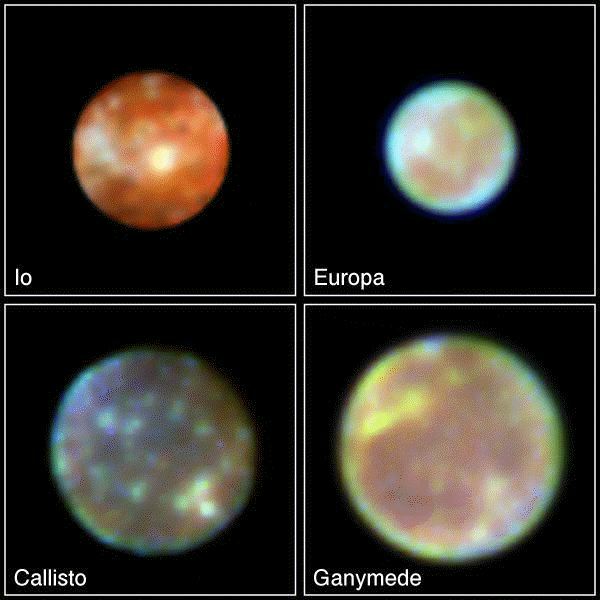 This is the Web Edition of "A Trip Into Space", a Coimbra-based electronic book on space science. Both the texts and the photos are by courtesy of National Aeronautics and Space Administration.
This is the Web Edition of "A Trip Into Space", a Coimbra-based electronic book on space science. Both the texts and the photos are by courtesy of National Aeronautics and Space Administration.
 This is the Web Edition of "A Trip Into Space", a Coimbra-based electronic book on space science. Both the texts and the photos are by courtesy of National Aeronautics and Space Administration. This is the Web Edition of "A Trip Into Space", a Coimbra-based electronic book on space science. Both the texts and the photos are by courtesy of National Aeronautics and Space Administration.
|
A Trip Into Space  Jupiter Jupiter  Jupiter - "Family Portrait" Of Its Largest Satellites Jupiter - "Family Portrait" Of Its Largest Satellites |
|
| See also: Jupiter Fact Sheet, Jupiter Rings Fact Sheet |   |
Over the past year Hubble has charted new volcanic activity on Io's active surface, found a faint oxygen atmosphere on the moon Europa, and identified ozone on the surface of Ganymede. Hubble ultraviolet observations of Callisto show the presence of fresh ice on the surface that may indicate impacts from micrometeorites and charged particles from Jupiter's magnetosphere.
Hubble observations will play a complementary role when the Galileo spacecraft arrives at Jupiter in December of this year.
Credit: K. Noll (STScI), J. Spencer (Lowell Observatory), and NASA

Last Update: 2005-Nov-29